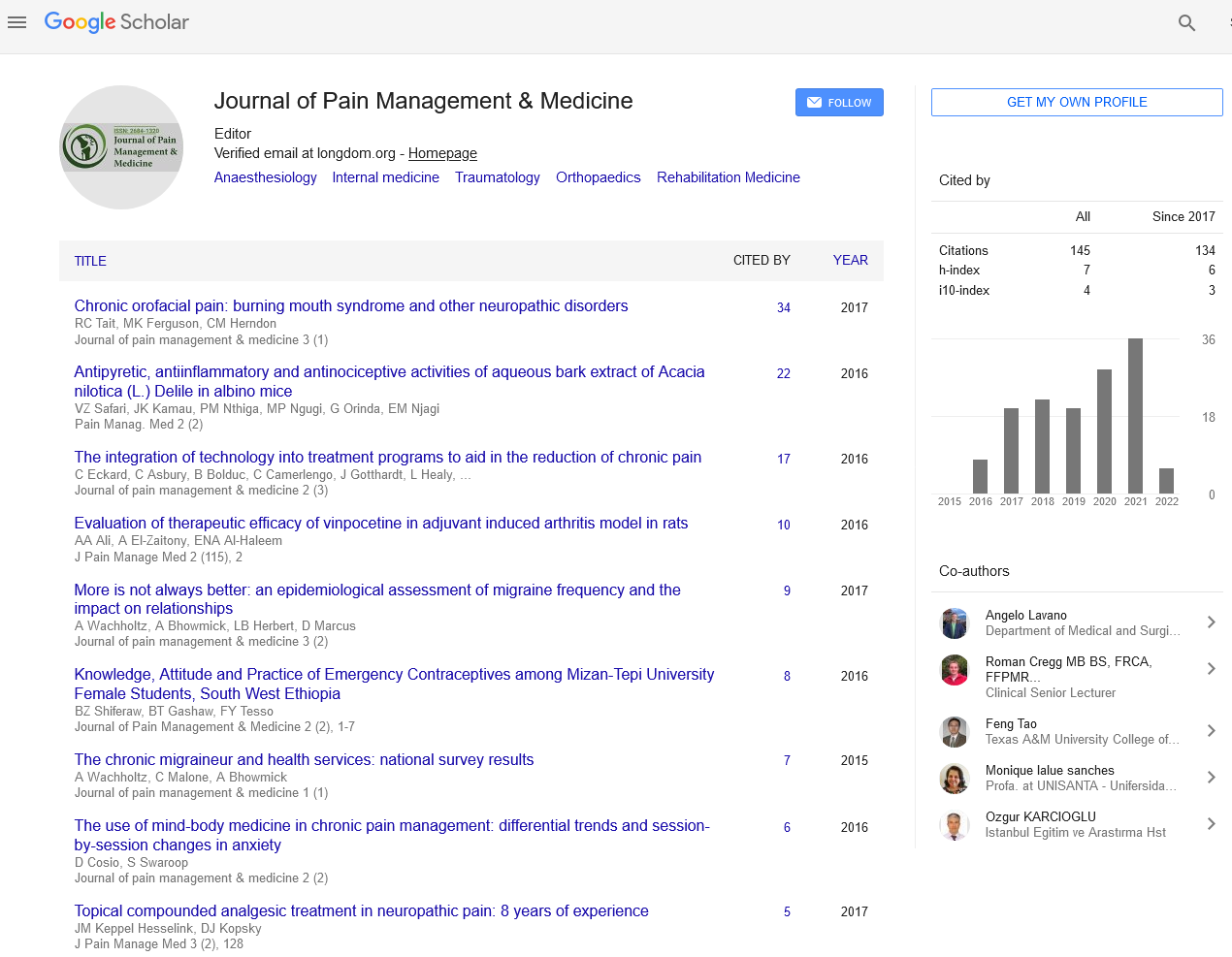Indexed In
- RefSeek
- Hamdard University
- EBSCO A-Z
- Publons
- Euro Pub
- Google Scholar
- Quality Open Access Market
Useful Links
Share This Page
Journal Flyer

Open Access Journals
- Agri and Aquaculture
- Biochemistry
- Bioinformatics & Systems Biology
- Business & Management
- Chemistry
- Clinical Sciences
- Engineering
- Food & Nutrition
- General Science
- Genetics & Molecular Biology
- Immunology & Microbiology
- Medical Sciences
- Neuroscience & Psychology
- Nursing & Health Care
- Pharmaceutical Sciences
Abstract
Antipyretic, Antiinflammatory and Antinociceptive Activities of Aqueous Bark Extract of Acacia Nilotica (L.) Delile in Albino Mice
Safari VZ, Kamau JK, Nthiga PM, Ngugi MP, Orinda G and Njagi EM
Acacia nilotica has been used to manage several diseases including pain, inflammation and fever. However, its efficacy has not been scientifically validated. The aim of this study therefore is to investigate the antinociceptive, antipyretic and anti-inflammatory activities of its aqueous extracts. The plant extract was collected from Loita division, Narok county in Kenya. A total of 96 albino mice with an average weight of 20 g was used for this study. Antinociceptive activity was determined by use of formalin−induced writhing test. A writhe was recorded by a stopwatch following the stretching of the abdomen and/or stretching of at least one hind limb. Anti-inflammatory activity was established by a formalin induced inflammation test. Hourly changes in paw sizes and reduction of edema around the paw was determined using a venier calipers. Antipyretic activity was carried out using Brewer’s yeast induced pyrexia. Temperature of each mouse was determined rectally by thermal probe thermometer. The aqueous leaf extracts of A. nilotica reduced pain, inflammation and fever mostly at dose 150 mg/kg body weight. Based on these findings it was concluded that the present study has demonstrated the antinociceptive, anti-inflammatory and antipyretic potential of aqueous leaf extracts of A. nilotica in albino mice and will serve as good bio-resource for generating readily available herbal formulations that are more effective in the treatment of pain, inflammation and fever conditions which are cheaper than the conventional synthetic drugs and have no side effects.


